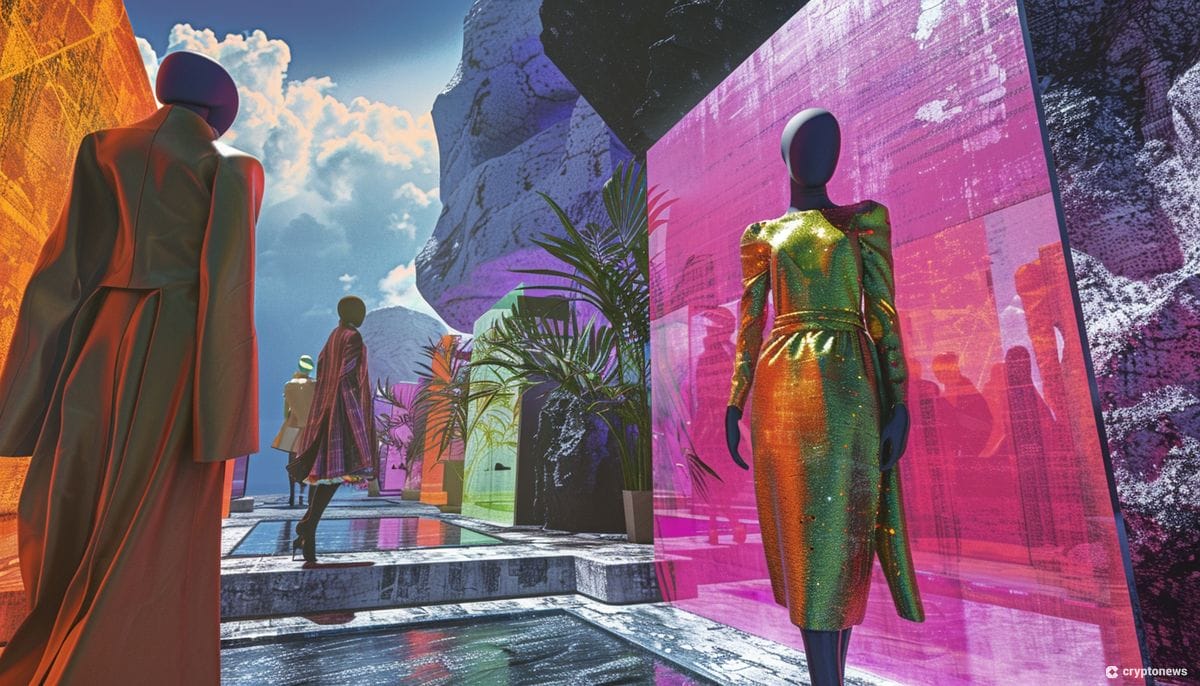From Gucci to Nike: How Top Brands are Redefining Fashion in the Metaverse

The concept of the metaverse, a virtual reality space where users can interact with each other and digital assets, has been gaining significant attention in recent years.
As this virtual world evolves, it is increasingly intersecting with other industries, including the fashion industry, giving rise to innovative opportunities and experiences.
Fashion has always been a means of self-expression, allowing individuals to showcase their style and personality. With the metaverse, this form of expression is taken to a whole new level.
In the metaverse, fashion designers and brands have the freedom to experiment and create without the constraints of traditional manufacturing processes.
They can explore bold and unconventional designs, incorporating vibrant colors, intricate patterns, and even elements that defy gravity.
Virtual fashion opens up endless possibilities for creativity and self-expression, offering individuals the chance to curate their virtual wardrobes with items that reflect their personal style.
Metaverse and Fashion Fusion
The fusion of fashion and the metaverse can revolutionize how individuals express their identities in virtual spaces.
In the metaverse, users can choose avatars that reflect their personal style, utilizing virtual clothing and accessories that often surpass the limitations of physical world fashion.
The digital fashion renaissance allows for unprecedented creativity and self-expression, offering users the ability to customize their virtual personas with unique designs that might be impossible or impractical in real life.
Fashion brands are recognizing this shift and collaborating with virtual platforms to craft immersive digital experiences.
For instance, Gucci’s collaboration with the online game platform Roblox created a virtual Gucci Garden, allowing users to explore and purchase exclusive digital items.
Similarly, Balenciaga partnered with the game Fortnite to release a series of virtual outfits, blending high fashion with popular gaming culture.
Sustainability in the Metaverse
The metaverse also presents a unique opportunity to promote sustainability in fashion.
Traditional fashion production is notorious for its environmental impact, including high carbon emissions and significant waste generation.
In contrast, virtual fashion eliminates the need for physical materials, manufacturing processes, and logistics, thereby significantly reducing its carbon footprint.
Eco-friendly virtual fashion designs are emerging as a testament to this potential.
For example, The Fabricant, a digital fashion house, creates purely virtual clothing that exists only in the digital realm, eliminating waste entirely.
Initiatives like these highlight how the metaverse can support environmental consciousness, providing a platform for sustainable fashion practices that do not compromise on creativity or style.
Famous Fashion Brands in the Metaverse
Several pioneering fashion brands have already integrated the metaverse into their marketing strategies and product offerings, leveraging virtual experiences to engage with consumers and expand their reach.
Gucci: Known for its avant-garde approach, Gucci has embraced the metaverse through collaborations with platforms like Roblox and the creation of digital wearables that appeal to a younger, tech-savvy audience.
Nike: Through its acquisition of RTFKT, a company that creates virtual sneakers and collectibles, Nike has positioned itself at the forefront of the virtual fashion revolution, offering limited-edition digital sneakers that can be worn in various virtual environments.
Burberry: This iconic brand has ventured into the metaverse with initiatives such as collaborating with the game Honor of Kings to offer exclusive virtual outfits, merging luxury fashion with interactive entertainment.
Louis Vuitton: Celebrating its 200th anniversary, Louis Vuitton launched a mobile game called “Louis: The Game,” where players can collect NFT art pieces, seamlessly blending luxury branding with digital gaming experiences.
These brands are not only enhancing consumer engagement through innovative virtual experiences but are also expanding their market reach to include digital-native consumers who value unique and immersive online interactions.
Legalization and Trademarks in the Metaverse
As the metaverse evolves, so does the legal landscape surrounding virtual assets.
Digital fashion items and virtual real estate require legal frameworks to ensure their protection and value.
Therefore, trademark protection becomes crucial for virtual brands to safeguard their intellectual property and maintain their brand identity in digital spaces.
Last year, Walmart and Crocs filed trademark applications indicating plans to offer virtual goods, digital assets, and NFTs.
However, the challenges of enforcing intellectual property rights in the metaverse are significant. Unauthorized reproductions of virtual designs and counterfeiting of digital goods are only some
of the prevalent issues that brands must address.
The Bottom Line
The intersection of the metaverse and fashion is an exciting frontier that blurs the lines between the physical and digital worlds, offering new avenues for creativity, self-expression, and commerce.
Virtual fashion purchases are becoming more common, with consumers willing to spend significant amounts on digital wearables that enhance their virtual identities.
Social interactions in the metaverse, such as attending virtual fashion shows or exploring branded digital spaces, are also contributing to the popularity of virtual fashion.
As the metaverse continues to expand, the integration of fashion, technology, and sustainability will likely shape the future of consumer engagement and market trends.
Brands that embrace these changes and innovate within the digital realm will be well-positioned to thrive in this new era of virtual fashion.








